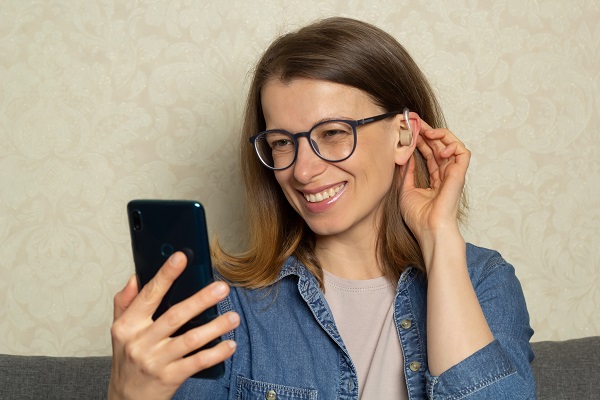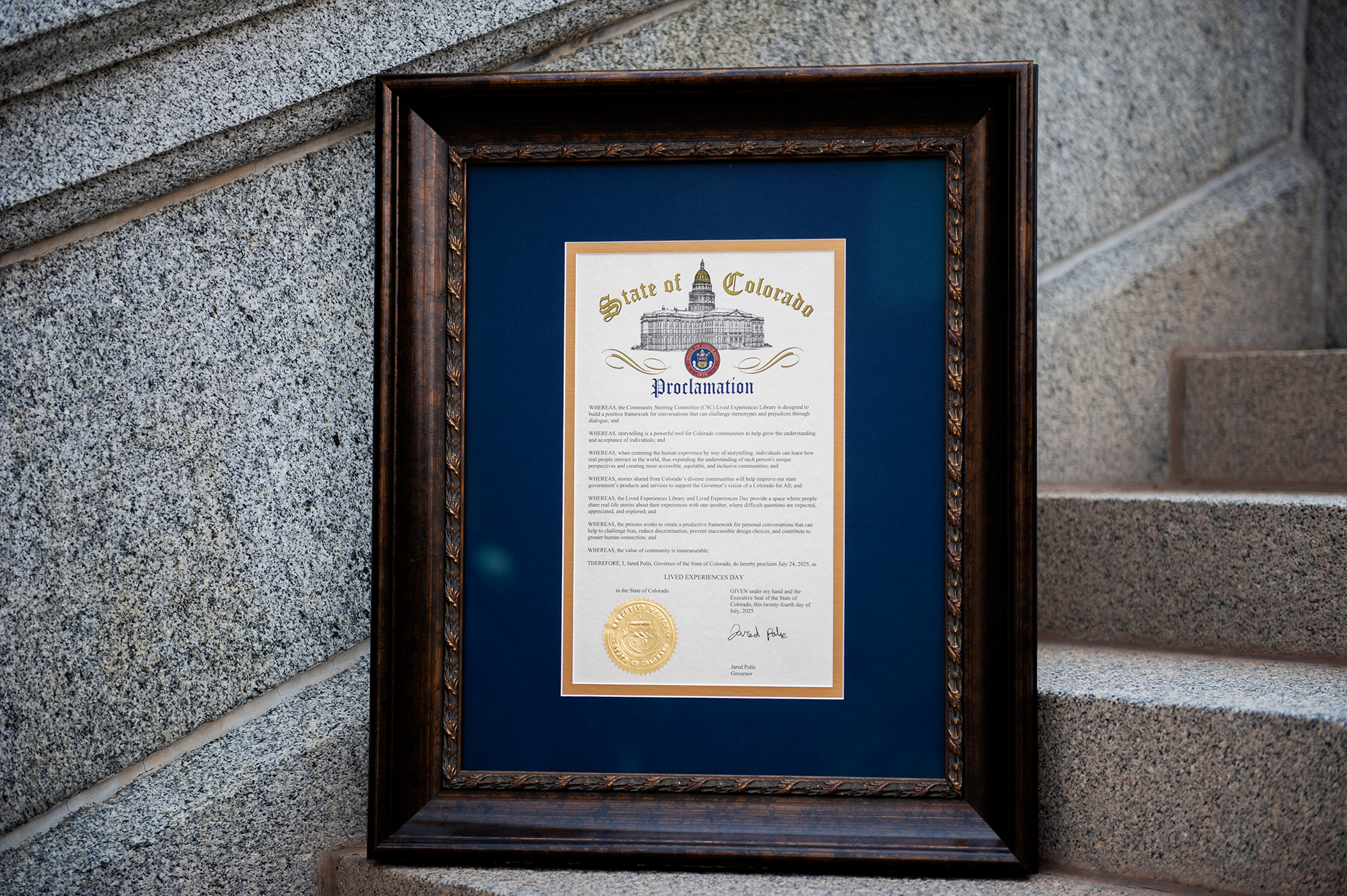State of Colorado Accessibility Newsletter - August 2025

Accessibility News
Streamlining public accommodations at OIT
By Karen Pellegrin, TAP Manager
The Governor’s Office of Information Technology (OIT) Technology Accessibility Program (TAP) has undertaken an initiative to improve the process for handling public accommodation requests. It will make technology more accessible and responsive to the public’s needs.
Previously, individuals requesting public accommodations, excluding employees who use the internal HR process, would do so via the OIT Accessibility Statement page. This could be done either by sending an email or filling out a Google Form. Requests were received by the TAP team and tracked on a spreadsheet.
User feedback, including people with disabilities across Colorado who are members of our Empathy Lab Community Steering Committee, revealed several pain points with this system:
- Difficulty Finding Resources: Valuable tools were hard to locate when needed.
- Form Fatigue: Users found the existing form long and confusing, especially when already experiencing frustration. They wanted to speak with a human instead of filling out another form.
- Inefficient Communication: The process involved a lot of back-and-forth emails, leading to delays in addressing requests. Data showed response times varied widely, from 1-14 days.
Analysis of data collected from June 2024 to February 2025 showed that out of 34 requests, 19 were for "access issues" (e.g., "I can't log on"), highlighting the need for a more direct and efficient way to resolve these common problems.
In response to this feedback and data, the TAP team implemented several key changes:
- Improved Findability of Aira: A link to the Aira Explorer mobile app is now available on all OIT pages in the footer, making it easy to locate for anyone facing visual information barriers, including those with low vision or cognitive difficulties.
- Updated Accessibility Statement Page: Contact information was moved to the top of the page for visibility, ensuring users can quickly find who to reach.
- Simplified Accommodation Form: The team renamed, improved, and simplified the OIT Disability Accommodation Form, making it easier and less intimidating to complete.
- Dedicated Phone Number: The most significant change was the addition of the new OIT Public Disability Accommodations Helpline in August 2025. It allows people to speak directly with a human, addressing a key piece of user feedback. The team is currently piloting the process to answer and track these calls.
- Internal Process Guide: The team created a How-To guide for responding to accommodations requests to help ensure a consistent process and timely responses from staff.
OIT's exploration into these improvements can also be a model for improving both state-level and local government accommodation processes. Here are some ideas:
- Centralized, User-Friendly Portals: Public entities should create a single, easy-to-navigate place for all public accommodation requests, preventing users from having to search multiple websites for the correct form or contact.
- Training and Accountability: All employees who interact with the public should receive mandatory training on disability etiquette and the accommodations process emphasizing the importance of a swift and empathetic response. Response times should be tracked and agencies/teams should be held accountable for meeting specific service level agreements.
- Leverage Technology for Efficiency: Use technology to streamline communication. Instead of endless email chains, a centralized tool or case management system could allow all relevant parties to view a request's status and collaborate in real-time. Automated alerts can be used to notify staff when a new request comes in and to remind them of deadlines.
- Establish a Statewide Accessibility Task Force: A permanent task force composed of disability advocates, state employees, and technology experts can continuously review and improve the accommodations process. This group could regularly solicit user feedback and pilot new technologies, helping the organization remain at the forefront of digital accessibility.
Aira ASL pilot program expands
There’s a new way for the deaf community to explore History Colorado museums and historic sites. Aira ASL is being offered as a pilot at 11 locations. Aira ASL helps users access in-person services instantly by connecting them with a professional human interpreter via a free app. We will have more details next month.

Accessibility and You
All about ASL accommodations
By Beckie Bean, TAP Accessibility Consultant
ASL is not specifically addressed in the digital accessibility rules, which may have left you wondering how it fits into your accessibility work. However, it may fall under reasonable accommodations and modifications for digital services, so let’s answer some common questions about ASL.
I have heard of ASL, but what is ASL?
- ASL is a visual-spatial language used by the deaf and hard of hearing communities in the United States.
- It is the third-most studied language in the U.S. and it is the native language of many who are deaf and hard of hearing.
- It has its own unique grammar, syntax and vocabulary, distinct from English, though both languages share some similarities in sentence structure and the expression of tense.
- Some native ASL signers do not read or understand written English well, especially at the speed of most video captions.
Is ASL interpretation required under the ADA?
- The ADA does not mandate a specific method of communication, but it does require that the chosen method be effective for the individual. This often means providing qualified ASL interpreters in situations involving medical appointments, legal proceedings, educational settings and public events.
How do you find qualified ASL Interpreters?
- If you need an ASL interpreter for a public event or meeting, here are some resources to help you fulfill those requests:
- Communication Access Services Providers Qualified for Colorado Court and Legal Settings
- Rural Communication Access Services
- There are several ASL interpreter mobile applications on the market. OIT is currently piloting Aira ASL at select Colorado Department of Labor & Employment (CDLE) and History Colorado locations. Aira ASL helps users access in-person services instantly by connecting them with a professional human interpreter via a free app.
Chelsea's Corner
Digital tech in air travel
By Chelsea Cook, TAP Accessibility Consultant
In honor of National Accessible Air Travel Day this month, I thought I could take a look at some of my air travel experiences with digital technology.
Often, the barriers start well before I leave home, with booking travel through airline websites and mobile applications. These websites and mobile apps are always changing, and sometimes accessibility is considered, but more often it's important (for the airlines) to get new features out the door than to fix cascading accessibility issues. In booking a recent rock climbing trip, my preferred carrier, Southwest Airlines, introduced a bug on the last screen in their purchasing process; you are required to accept the "Terms and Conditions," but VoiceOver just sees them as a link to the terms, not a checkbox. I tried again on the website on a computer, in two different browsers, and couldn't get past the "Remember your searches?" dialog. Since the fare I wanted was on sale and it was after business hours, I had to use an Aira agent to book the trip. We got it done, but it did not make me feel independent or empowered. (For context, the "Find Flights" button on Southwest's app has been unlabeled for years, and was just recently labeled.)
Once I get to the airport, the sense of disempowerment continues—the treatment of people with disabilities by airport employees in the physical world could fill a whole newsletter by itself. I'll stick with the digital and say that even though the airline check-in kiosks are supposed to be accessible, I personally have not tried one and prefer to avoid them. Even though I prefer to carry a digital boarding pass (you won't lose your phone, your watch is attached to you, and no chance of getting connections mixed up), and always check in online, airport employees often print one anyway, against my requests.
Denver International Airport partners with Aira to provide the location as an "access offer" which means blind passengers can use Aira in the airport for free. (This is similar to the state access offers, though they are limited to 30 minutes per session.) If my handling of luggage allows (it usually doesn't because I don't have a hands-free way to carry my phone) this is great. The one time I did try it, the agent kept me on track by using the floor material as navigation cues and would warn me of any signs or obstacles that my camera could see, so I was able to move through the airport much faster. I have heard stories of friends who have been approached by strangers when they are using Aira in the airport, so it still might look a little unusual.
And now, with my boarding pass on my watch, I hear the welcome “ding” sound and can proceed down the jet bridge. On the plane, after the ticketing and airport chaos, is when I can finally start to relax. Happy flying!
Celebrating lived experiences
OIT's Technology Accessibility Program (TAP) team, AVID@OIT Employee Resource Group (ERG), Community Steering Committee (CSC) and accessibility allies from state agencies and offices gathered at the State Capitol steps on August 1 to celebrate Lived Experiences Day and honor the efforts of our colleagues and friends.
Sharing and listening to the real stories of our customers helps us recognize that not everyone experiences the digital world the same way. Testimonials and feedback from members of the disability community and other marginalized groups can help inform the work we do and the products and services we provide.
Governor Polis proclaimed July 24, 2025, Lived Experiences Day, and the TAP team hopes to one day make the proclamation permanent.


Notable & Quotable
“Accessible design is good design - it benefits people who don't have disabilities as well as people who do. Accessibility is all about removing barriers and providing the benefits of technology for everyone.”
- Steve Ballmer, former CEO of Microsoft
